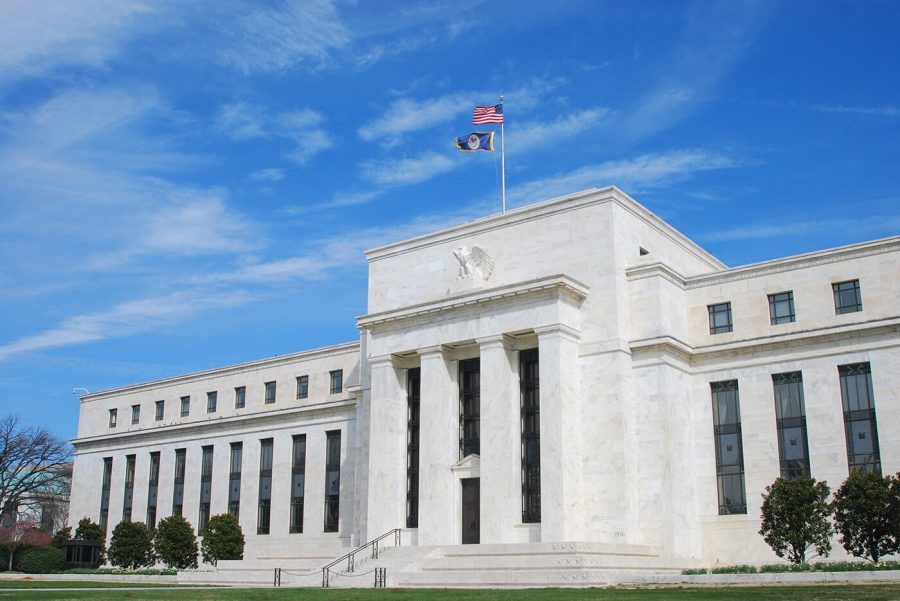In this article:
The U.S. Federal Reserve sets targets for the federal funds rate, which is the interest rate certain financial institutions pay on overnight loans they make to one another. In response to the emerging coronavirus outbreak, the Fed cut its target interest rate to 0% from 0.25% in mid-March.
So what does a complicated financial calculation between financial institutions mean to you? Consumers don't receive the Fed rate on loans, and you don't necessarily need to understand the inner workings of federal monetary policy. But a Fed rate change is important because the federal funds rate is also a benchmark rate, and that means it influences many other interest rates—in savings, mortgages, credit cards and more.
Lowering the federal funds rate is sometimes done to spur the economy, as it makes borrowing money cheaper and keeping money in savings less appealing. As an individual, the rate cuts may impact your finances in several ways. Here's what you need to know.
How Could a Rate Cut Affect Your Savings?
The interest you receive on money that's held in a savings, money market and checking accounts may be tied to the Fed funds rate. A rate cut could, therefore, lead the bank to lower the interest you receive on your savings. Some banks might react right away, while others may take a few weeks to lower their rates, but many will lower their rates in response to a Fed rate cut.
If you already have money in a certificate of deposit (CD) with a fixed rate, your rate is locked in for the duration of the CD's term. If you don't, opening a CD could be a good option for short-term saving that will net more interest than a basic savings account, although their rates may already reflect the lowered Fed rate. Generally, you have to agree to keep your money in the account for a certain period or pay an early withdrawal penalty. However, some banks offer CDs that don't have an early withdrawal penalty.
How Might a Rate Cut Affect Credit Cards?
Most credit cards have a variable interest rate that's tied to a benchmark rate called the prime rate. The prime rate is, in turn, influenced by the Fed funds rates. As the benchmark rises or falls, credit card interest rates on purchases, balance transfers and cash advances follow.
While the Fed rate cut may lead to lower credit card interest rates, a slight change won't make much of a difference for borrowers in the short term. For example, a 2% interest rate discount only saves you about $5 a month on a $3,000 balance.
If you anticipate needing to carry a credit card balance, consider contacting your credit card issuer to negotiate a lower interest rate in addition to the variable-rate drop. Although credit card issuers tend to get more stringent with new account openings during an economic downturn, you could also look for a new card that has a promotional introductory 0% rate.
How Could a Fed Rate Cut Affect Mortgages?
Rate cuts can be a mixed bag for those who want to buy a home or currently have a mortgage.
In the immediate aftermath of a rate cut, a rush of mortgage applications from people looking to buy a home or refinance their current mortgage can lead to a backlog of applications—and that sometimes results in lenders increasing rates. As the demand dies down, mortgage rates may fall in correlation with the Fed rate's decrease.
If you're interested in buying a home, make sure your credit and finances are in order to take advantage of potentially lower rates. Those who currently have a fixed-rate mortgage could keep an eye on refinance rates to see if it makes sense to refinance.
Homeowners who have a variable-rate mortgage, such as an adjustable-rate mortgage (ARM) or home equity line of credit (HELOC), may see their rates and payments drop. It's good news, for now, but remember that rates can also increase in the future.
If you have a variable-rate loan, consider how long you have left to repay the loan and when you plan to move. With lower rates, it might make sense to refinance with a fixed-rate mortgage or home equity loan. It's not always an easy calculation, though, as you may have to pay closing costs when refinancing, which could cut into your savings. If you plan to be in your home for many years, the stability of a fixed-rate mortgage could give you peace of mind and save you money over time considering the current interest rates.
How Could a Rate Cut Affect Other Types of Loans?
The impact on other types of loans will depend on whether the loan has a fixed or variable rate and, if it's a variable rate, which benchmark rate the creditor uses.
If you have variable-rate loans, you may see your interest rate and monthly payment decrease. However, most personal loans, auto loans and student loans carry fixed rates. If you currently have these types of debt, a lower rate won't directly impact how much you're paying.
Lowered rates could create opportunities to save money by refinancing. As with refinancing a mortgage, you'll take out a new loan (with a lower rate) to pay off your current balance. Here's more information on refinancing personal, auto and student loans.
How to Respond to a Fed Rate Cut
While a Fed rate cut can impact your finances in many ways, a small decrease or increase might not be significant enough to warrant a response. Depending on your situation, you might pay or earn a little less interest.
The exception is for borrowers who have large loans—especially those who have or are looking for a mortgage. When a lot of money is on the line, locking in a low rate (or refinancing to a lower rate) can lead to significant monthly and long-term savings.

